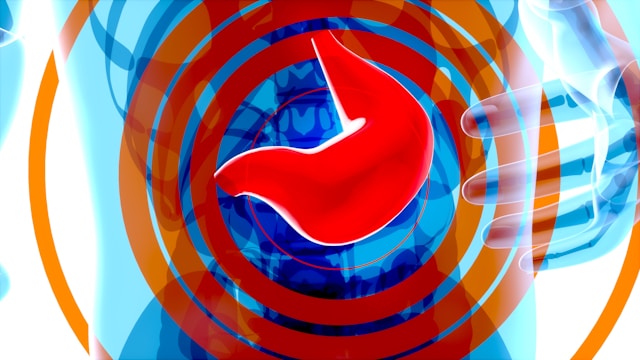Substance Use Trends in Teens and Young Adults
Substance use in teens and young adults can be difficult to identify and can lead to substance abuse problems in later life. Some of the signs and symptoms of drug use in young people can be difficult to separate from the changes in mood and behavior that are a natural part of growing up. To complicate this further, young people with substance use disorders are also more likely to have co-occurring mental and physical disorders. They are also at higher risk for developing an addiction to substances in adulthood.
Although no parent wants to discover that their child is misusing substances, urging them to seek help early on can improve their quality of life and outcomes. Understanding and self-educating are important steps in affecting healthy change and this article will cover important aspects of substance abuse in teens and young adults.
Signs that Teens or Young Adults Might be Drinking or Using Drugs
It can be really challenging to determine if teens or young adults are misusing substances, as many of the signs that are used in the diagnosis of a substance use disorder are natural parts of being young and creating an identity separate from childhood. Further complicating this is the overlap between certain mental health disorders, such as depression and anxiety and behaviors associated with using substances. Regardless of which mental health disorder the symptoms fall under, seeking the advice of a mental health professional is important. Some signs and symptoms of teen and young adult substance misuse include changes in:
Behavior and personality
- Depression, mood swings and anxiety
- Becoming withdrawn, silent or not talking about problems with anyone
- Hyperactivity, elation or loss of inhibition
- Decreased motivation
- Unable to focus
- Lying, hiding things, or stealing
- Changes in friendship groups or in relationships with family members
- Absenteeism
- Loss of interest in things they were previously passionate about
- Locks doors and is secretive with their phone
- Goes out for long periods of time and can’t explain where they were
- Breaks curfew, disregards house rules
Hygiene
- Using chewing gum, mints, eye drops or deodorants to hide smells and signs of drug use
- Less interest in physical appearance
- Not showering or bathing
- Smells of smoke or other drugs on clothing
- Washing clothing only after going out to hide smells or stains
Physical health
- Track-marks or suddenly only wearing long-sleeved tops to cover up arms
- Being sick constantly
- Red or flushed face at unusual times
- Nose-bleeds
- Bloodshot eyes, dilated pupils or inability to focus vision
- Being unusually tired or sleeping more than previously
- Changes in diet
- Slurred or rushed speech
- Being clumsier or disco-ordinated or more bruises or abrasions appearing
- Sores or more spots around mouth
- Vomiting
- Seizures
While this list is not exhaustive, it is important to trust your instincts. If a loved one starts to act uncharacteristically it is ok to be concerned. It is better to open communication with the teen or young adult about these changes than to “hope for the best”. Whether they are misusing substances or not or have another mental disorder, changes in mood, behavior, appearance and physical health may indicate that the person is not coping well with something and may need support from parents, friends or medical professionals.
Statistics of Substance Use in Teens and Young Adults
In the United States, studies found that, within the previous month, 11.89 million young people had drunk alcohol or taken drugs. The Monitoring the Future Survey produces yearly reports of substance use and how it changes. The 1975-2023 report revealed the following about young adults (aged 19-30 years) in 2022:
- 43.6% consumed some form of marijuana
- 23.7% vaped nicotine
- 21.3% vaped marijuana
- 17.8% smoked cigarettes and,
- 17.4% consumed another drug
Although use of illicit drugs in teens has decreased or maintained pre-pandemic levels over the past few years, the rates of overdose-related deaths in teens has increased drastically. The main culprit is thought to be illicit fentanyl (a potent synthetic opioid) being added to counterfeit prescription pills. Illicit drug manufacturers will often make their pills look like benzodiazepines, ADHD medications (such as Adderall) or opioids. These drugs, often obtained from friends, social media, or at clubs or parties are often laced with fentanyl. Even minute doses of fentanyl can be fatal.
Younger generations are also drinking less than their predecessors. One study found that Gen Z drinks 20% less than Millennials. This seems to be part of a larger trend as Millennials report drinking less than both Baby Boomers and Gen X.
What is High-Risk Substance Use?
High-risk substance use has been classified by the Centers for Disease Control (CDC) as “any use by adolescents of substances with a high risk of adverse outcomes (i.e., injury, criminal justice involvement, school dropout, loss of life)”.
- prescription drugs,
- illicit drugs (i.e., cocaine, heroin, methamphetamines, inhalants, hallucinogens, or ecstasy), and
- drugs which are injected and run the risk of infection of blood-borne diseases such as HIV and hepatitis.
What Makes Adolescent and Young Adult Brains More Vulnerable to Substance Misuse?
The brains of young people are highly susceptible to alcohol and drug-related harm. Their brains are still developing frontal regions – the regions associated with executive functions (such as decision-making) – but have fully developed reward systems. This means that pleasure-seeking and habit-forming behaviors are fully rewarded, without a well-developed area of the brain to consider potential negative consequences or prioritize healthy coping strategies over unhealthy alternatives.
What Risk Factors are Linked to High-Risk Substance Use?
While each person will have their own reasons for using substances, some biological, social and psychological factors place some teens at a higher risk for misusing substances than others. Some of these risk factors include:
- Parental misuse of substances or a family-history of substance use disorder
- Parents or peers who appear to support substance use behaviors
- Low academic performance
- Feelings of isolation and not feeling connected with peers
- Parents and care-givers who do not monitor changes in the behaviors of teens or young adults under their care
- Childhood sexual abuse
- Mental health disorders
- Family rejection of gender identity or sexual orientation
How can Parents and Care-Givers Prevent High-Risk Substance Use?
The CDC states that parental monitoring is an important protective factor against high-risk substance use. Effective parental monitoring (which is not limited to parents, but all care-givers) can look like:
- Talking openly and non-judgmentally with teens about the risks of substance use and potential negative consequences
- Learning active listening skills and using them to engage and understand teens and young adults
- Creating healthy boundaries with teens and young adults, with clear expectations, rules and consequences
- Enforcing consequences for broken rules fairly and consistently
- Getting to know a young person’s friends and partners and their parents
- Knowing where and how a young person spends money
- Asking for other adults, who are close to your teen or young adult, for their observations surrounding any changes in the young person’s moods, behaviors or friends
- Making sure that you and your teen or young adult are aware of how to contact each other at any time
Being supportive of the young person under your care is important. Teens and young people with a feeling of family support, school connectedness and familial engagement tend to engage less in high-risk substance use and other risk-taking behaviors. Seeking treatment for a substance use disorder as soon as possible is important and has better outcomes.




